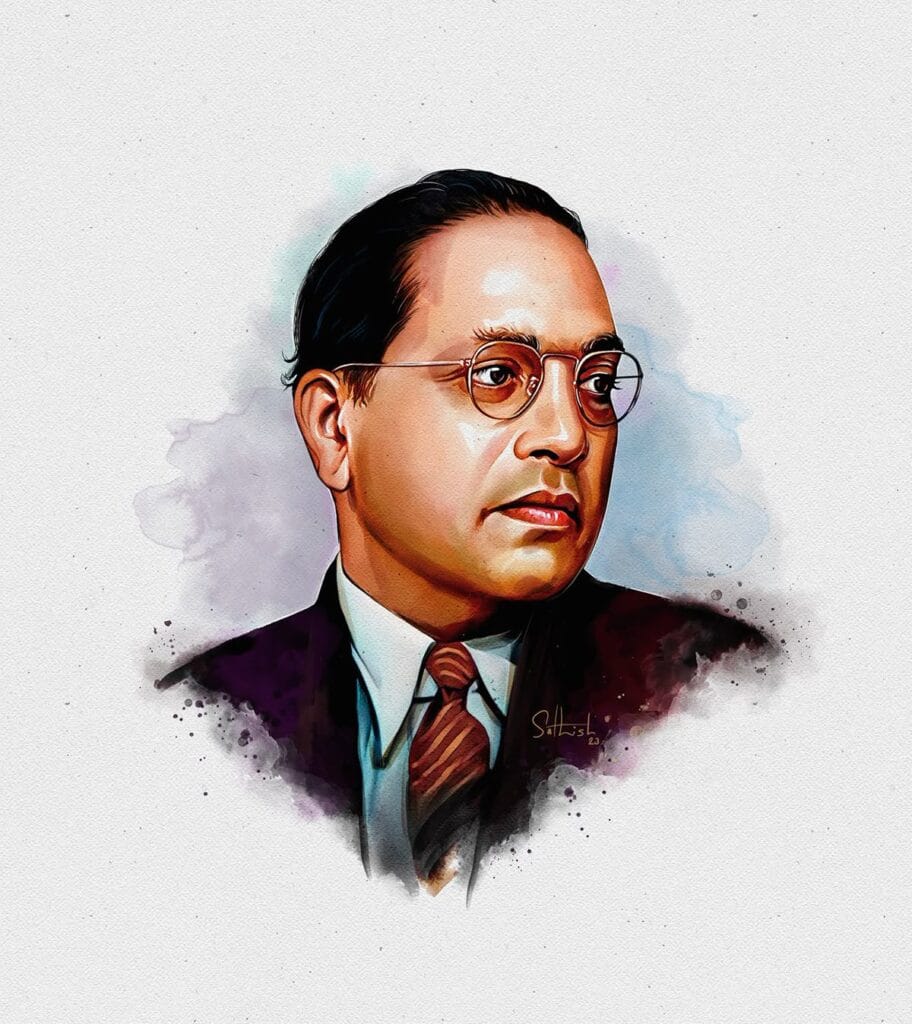In the pages of Indian history, some names stand out—not just as history, but as the representation of an entire era. Babasaheb Dr. B.R. Ambedkar is one such towering figure.
Even decades after India’s independence, whenever we speak of social justice, constitutional rights, or the very foundation of Indian democracy, his name stands before us like a guiding light.
He was not merely an individual, but an ideology—an idea that showed the oppressed communities, marginalized for centuries, the path to self-respect and an equal life.
Born on April 14, 1891, in the small village of Mhow, Maharashtra, Bhimrao Ramji Ambedkar is known to the world as ‘Babasaheb’. An exceptional scholar, economist, jurist, and political leader, he is often called the greatest architect of modern India.
His greatest title is that of the ‘Father of the Indian Constitution’. He was posthumously awarded the nation’s highest civilian honor, the ‘Bharat Ratna’, but his true honor resides in the hearts of millions for whom he remains an eternal inspiration.
This blog post is an attempt to deeply explore every facet of Dr. Bhimrao Ramji Ambedkar’s multifaceted life. We will understand his struggle from birth until Mahaparinirvan—how he obtained the world’s best education despite severe economic hardships and social untouchability; how, as a lawyer, politician, and social reformer, he spearheaded decisive movements against casteism; and how he laid the foundation of an egalitarian nation through the creation of the Constitution. This journey is about comprehending his writings, philosophy, and the enduring legacy he bequeathed to India.
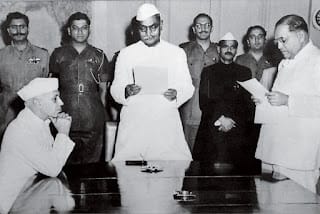
Early Life and Struggle
Birth and Childhood: The Bitter Experience of Untouchability
Birth, Family, and Caste:
Dr. B.R. Ambedkar was born on April 14, 1891, in Mhow Cantonment of the Central Provinces (now Madhya Pradesh). His father, Ramji Maloji Sakpal, was a Subedar in the British Army, and his mother, Bhimabai, was a religious woman.
Ambedkar was the fourteenth and last child of his parents. His family was not very poor financially, but the inhumane wall that surrounded them was their caste. They belonged to the Mahar community of Maharashtra, which was considered “untouchable” at the time.
Childhood of Untouchability:
Babasaheb’s childhood was filled with bitter experiences of humiliation, segregation, and untouchability. He was made to sit separately from the other children in school, had to sit on a sack on the floor, and the upper-caste teacher in the class would give him water from a distance—and sometimes, there was no one to give him water at all.
Once, when he was going to meet his father, no bullock cart driver would take him because he was an ‘untouchable’. Whether it was travelling by train or bus, or drinking water from public wells, at every step he was made to feel that he was separate and inferior to the rest of society. It was these experiences that ignited the fire within the future Constitution maker to fight against centuries of social injustice.
Education and Financial Status: From Struggle to the Zenith
Struggle in Early Education:
Despite the untouchability in school, Ambedkar was exceptionally sharp in his studies. His teacher, Krishnaji Keshav Ambedkar, who was affectionate towards him, added his own surname to his name, making it ‘Ambedkar’. From primary school to high school, he overcame every obstacle but always faced neglect and humiliation.
Help from the Maharaja of Baroda:
It was his brilliance that gave him the opportunity to move forward. With the help of a scholarship from Maharaja Sayajirao Gaekwad III of Baroda, Ambedkar departed for higher education in the United States in 1913. This was a turning point in his life. Financial difficulty always remained with him, but this scholarship opened the door for him to access the best knowledge in the world.
Higher Education in India and Abroad:
Ambedkar made knowledge his biggest weapon:
- Columbia University, New York: He earned his M.A. and Ph.D. in Economics here. His research paper, “National Dividend for India: A Historic and Analytical Study,” became famous.
- London School of Economics (LSE): From here, he obtained the D.Sc. (Doctor of Science) degree in Economics, which was an extremely rare achievement. His D.Sc. thesis, “The Problem of the Rupee: Its Origin and Its Solution,” is still considered a landmark.
- Gray’s Inn, London: He also qualified as a Barrister-at-Law.
Despite reaching these zeniths of education, upon returning to India, he once again had to face the same social disdain. However, he was now equipped with the power of knowledge, which enabled him to fight any social force.
Private Life and the Beginning of his Career Marriage:
विवाह: Life Partners and Support
Dr. Ambedkar’s personal life was as tumultuous and inspiring as his public one.
Ramabai Ambedkar:
Ambedkar was only 15 when he married Ramabai. Despite poverty and social contempt, Ramabai tirelessly supported him in achieving his educational and social goals. During her husband’s studies abroad, Ramabai lived a life of extreme simplicity and struggle in India. She was the first and most crucial partner in Babasaheb’s struggles. Unfortunately, the death of several of their children and Ramabai’s passing in 1935 was a great sorrow in Ambedkar’s life.
Dr. Savita Ambedkar:
In 1948, he married a Brahmin doctor, Sharda Kabir, who adopted the name Savita Ambedkar after conversion. Dr. Savita played a vital role in his health and intellectual work in his final years. This marriage was a brave example of an inter-caste union, striking a blow against the social conventions of the time.
Job and Professional Life: The Persistence of Untouchability
After returning to India with advanced degrees from abroad, Dr. Ambedkar was hopeful that his qualifications and titles would secure him a respectable career. However, even here, untouchability and casteism continued to haunt him.
Early Jobs and Humiliation:
Service in the Baroda State:
To fulfill the commitment of Maharaja Sayajirao Gaekwad’s scholarship, Ambedkar had to work in the Baroda State as the Military Secretary. Here too, he faced humiliation. He was not allowed to drink water or use common furniture in the State office.
As a Professor:
He also taught as a Professor of Political Economy at Sydenham College in Mumbai. Even here, his fellow teachers kept their distance from him.
The Continuation of Financial Struggle:
Despite possessing the highest educational qualifications, he could not secure a respectable and stable job due to social discrimination. Often, he couldn’t even rent a room and was evicted from public places because of untouchability. This constant economic and social struggle convinced him that economic upliftment for the Dalits would not be possible until the social system itself was changed.
Legal Practice:
Finally, after returning from London with a Barrister-at-Law degree in 1923, he started practicing law in the Bombay High Court. Legal practice provided him with financial stability and a deep understanding of the Indian legal system, which later helped him in the drafting of the Constitution. During his legal career, he advocated for many cases directly related to social justice and Dalit rights, which turned his attention toward political and social movements.
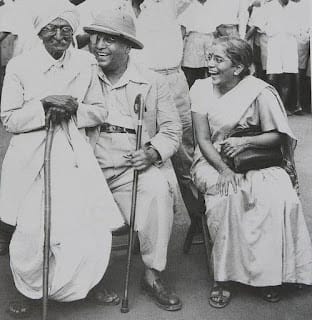
Social reform movements and work
Dr. Ambedkar’s life was synonymous with social revolution. He did not merely work within the legal framework, but stepped onto the ground and shook the society that had ostracized him and his community for centuries.
Social Reform Movements: From Struggle to Revolution
His struggle against caste discrimination and untouchability was not just a protest, but a tireless effort to secure self-respect and equal rights for the Dalit community.
“Mukhpatra” (Mouthpieces is a Magazines) and Ideological Weapons:
Establishment of Organizations:
To translate his ideas into action on the ground, he formed various organizations:
- ‘Bahishkrit Hitakarini Sabha’ (1924): Its objective was to work for the educational and social upliftment of Dalits on the principle of “Educate, Agitate, Organize” (शिक्षित करो, संगठित करो, संघर्ष करो).
- ‘Samata Sainik Dal’ (Equality Soldiers’ Corps): This was a social organization created to implement the principles of social equality at the grass-roots level and to maintain peace and order during protests.
Decisive Satyagrahas:
Two major movements took place under his leadership, which shook the foundations of Indian society:
- Mahad Satyagraha (Chavdar Tank) (1927): In Mahad, Maharashtra, Ambedkar led thousands of Dalits to drink water from the public Chavdar Tank, declaring that all citizens have an equal right to public water sources. This was not merely an agitation to drink water, but a declaration of equality and civil rights.
- Kalaram Temple Entry Movement (Nashik, 1930): This temple entry movement was a long and difficult struggle to gain access to religious places that had been forbidden to Dalits for centuries. This was a major step towards establishing social justice in the religious sphere.
Thought and Criticism on the Caste System:
Dr. Ambedkar was one of the fiercest critics of the Varna system and the Caste System.
‘Annihilation of Caste’: This is his most famous and powerful writing. In it, he argued that caste cannot merely be reformed, but must be completely destroyed/annihilated.
He described the caste system not as a ‘division of labour’ but as a ‘division of labourers,’ which had crippled Indian society. According to him, inter-caste marriage and a non-discriminatory social system are the only way to annihilate caste.
Work for Women
Dr. Ambedkar was a strong proponent of equal rights not only for Dalits but also for all women.
- He emphasized women’s education, property rights, and political participation. He believed that the progress of any society is measured by the progress of women in that society.
- As the first Law Minister of independent India, he drafted the Hindu Code Bill. This bill included provisions to grant women rights to divorce, inheritance, and property, which helped Indian women take revolutionary steps towards legal equality. When the bill could not be passed, he resigned from his ministerial post in protest, which demonstrates his unwavering commitment to social justice.
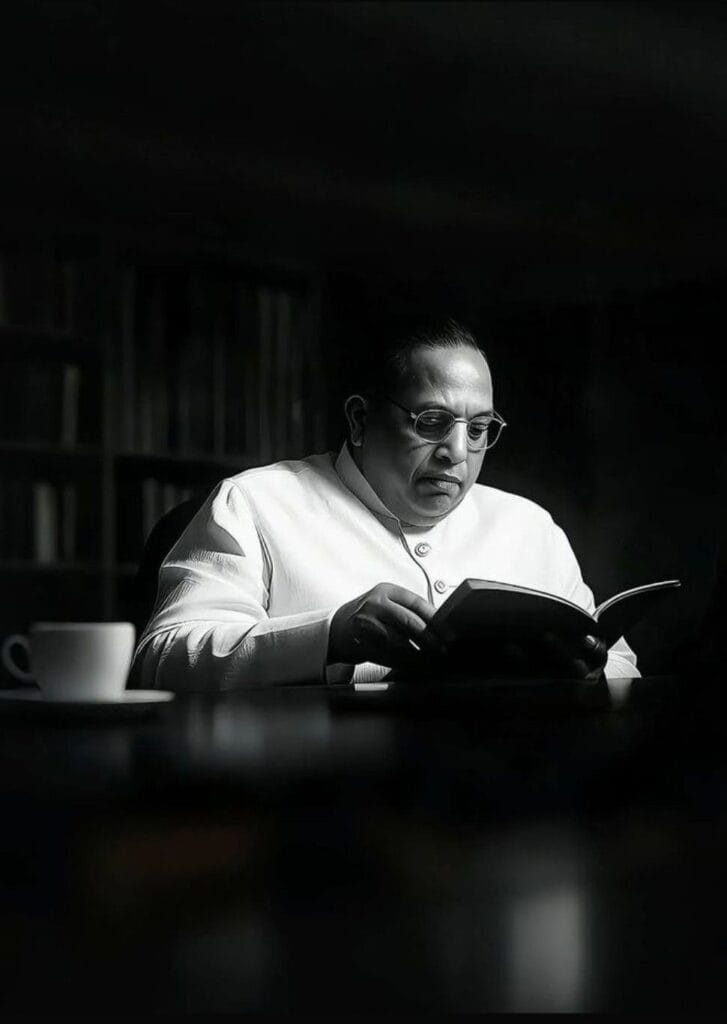
Dr. Ambedkar’s role in politics and freedom struggle
Politics and Nation Building
Dr. Ambedkar’s politics were not merely about acquiring power or independence; they were an attempt to place social democracy at the heart of nation-building. He believed that true independence was incomplete until the weakest section of society achieved social equality.
Early Politics: The Round Table Conferences
Dr. Ambedkar used significant international platforms to establish the political rights of the Dalits.
Representation and Demands in the Round Table Conference:
He participated in all three Round Table Conferences held in London between 1930 and 1932 as the representative of the Depressed Classes.
He clearly demanded that the Dalits be recognized as a separate minority unit and that a provision for Separate Electorates be made for them.
His argument was that Dalit representatives elected from the general Hindu electorate would never be able to safeguard the interests of their community.
The Poona Pact (Poona Pact): Dr. Ambedkar’s Relationship and Differences with Gandhiji
In response to Ambedkar’s demand at the Round Table Conference, the British Government announced the Communal Award, which granted Separate Electorates to the Dalits.
Gandhiji’s Opposition:
Mahatma Gandhi strongly opposed this, as he believed that this step would create a permanent division in the Hindu society. He began a fast unto death.
Historic Agreement (1932):
For the sake of the nation’s interest and to save Gandhiji’s life, Dr. Ambedkar reluctantly decided to give up the right to Separate Electorates. This resulted in the signing of the Poona Pact.
Result of the Poona Pact:
In exchange for the Separate Electorates, the number of Reserved Seats for Dalits in the provincial and central legislatures was increased.
This symbolized Ambedkar’s political foresight, where he took one step back for the community’s interest but achieved a greater political gain.
This agreement also reflects the ideological differences between Gandhi and Ambedkar, as well as the compulsion for them to unite for the sake of nation-building.
Formation of political parties
To give political power to his movements, he formed political parties from time to time:
Independent Labour Party (ILP) (1936):
He formed this party primarily to protect the interests of labourers and peasants. Its goal was to work not only for Dalits but for all deprived classes. It performed well in the 1937 provincial elections in the Bombay Presidency.
All India Scheduled Castes Federation (SCF) (1942):
After the ILP, he formed the SCF with the aim of unifying the political interests of Dalits on an all-India platform. Its main focus was on organizing Dalits as a political force, especially in the context of constitutional reforms in British India.
Republican Party of India (RPI):
his party was formed after his demise in 1956, according to his last wish, with the goal of working for Dalits and all oppressed communities.
Dr. Ambedkar’s role in the fight for independence was distinct from that of the traditional nationalists.
- Priority: He prioritized social freedom over political independence. He believed that if India became free from the British, but the social structure remained unchanged, that freedom would be meaningless for the Dalits.
- Criticism: He criticized the concept of nationalism that overlooked caste inequality. His struggle was not only against colonial rule but also against the Internal Social Dictatorship of casteism.
- National Role: During World War II, he was included in the Viceroy’s Executive Council as the Labour Member. He utilized this position to advocate for the interests of Dalits and the working class.
Thus, Dr. Ambedkar played a parallel yet extremely crucial role in the Indian freedom struggle, ensuring that the agenda of the newly formed nation was not merely a transfer of power, but one of equality, justice, and inclusive development.
Constitution Making and Key Positions
Dr. B.R. Ambedkar’s greatest and most lasting contribution lies in shaping the legal and political framework of independent India. His struggles, education, and legal experience made him the most suitable person for this historic responsibility.
Ambedkar: Independent India’s First Law Minister
After India gained independence on August 15, 1947, Dr. Ambedkar was appointed as the country’s first Law Minister.
This appointment was a universal acknowledgment of his legal genius and knowledge, even though his political and social views often did not align with the then-ruling Congress party.
In this position, he played a crucial role in laying the foundation for a just and modern legal system for the country.
Constitution Drafting: Father of the Indian Constitution
After becoming the Law Minister, he was entrusted with the responsibility of the most crucial task in Indian history: drafting the Constitution of India.
Chairman of the Constitution Drafting Committee:
- Appointment: On August 29, 1947, the Constituent Assembly appointed Dr. B.R. Ambedkar as the Chairman of the Constitution Drafting Committee.
- Role: He led this committee through the complex and detailed process that lasted two years, eleven months, and eighteen days. His profound legal understanding, knowledge of the constitutions of various countries, and his unwavering commitment to social justice earned him the proud title of “Father of the Indian Constitution.” He debated and clarified every clause of the Constitution and ensured that this document created an inclusive India.
Salient Principles Enshrined in the Constitution:
Dr. Ambedkar ensured that the Indian Constitution was not just a legal document but a social charter that would pave the way for ending centuries of injustice.
- Equality (समानता): Equal status and opportunity were ensured for all citizens through Article 14 (Equality before the law) and Article 17 (Abolition of Untouchability). This was the legal outcome of Ambedkar’s lifelong struggle.
- Liberty (स्वतंत्रता): Freedoms of speech, expression, religion, and profession were secured in the Fundamental Rights.
- Fraternity (बंधुत्व): He considered Fraternity to be the foundation of Indian democracy, meaning ensuring the unity and integrity of the country and promoting the spirit of brotherhood among all citizens.
- Justice (न्याय): Social, economic, and political justice was made the supreme goal in the Preamble of the Constitution. Specifically, the provision for Reservation for Dalits, Tribals, and Backward Classes was his biggest step toward ensuring social justice.
- Democracy (लोकतंत्र): He played a crucial role in making India a Sovereign, Socialist, Secular, and Democratic Republic, where power rests not just with the majority but with the rule of law and the rights of all citizens.
In brief, Dr. Ambedkar made the Constitution an engine that could transform political democracy into social democracy.
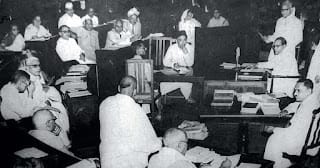
Ambedkar’s Key Ideas and Struggles
Dr. Ambedkar not only fought a political and legal battle for social justice and equality but also waged a direct struggle on the ideological and religious fronts. His ideas were a challenge to the conservative forces of society.
Thought on Manusmriti and Hindu Nationalist Organizations
Dr. Ambedkar was a vocal opponent of the conservative system within Hinduism that gave religious sanction to caste and untouchability.
Burning of Manusmriti:
On December 25, 1927, Dr. Ambedkar publicly burned a copy of the Manusmriti during the Mahad Satyagraha. This act was far more than just burning a book; it was a symbolic protest.
The Manusmriti was viewed as the legal and religious code that provided the theoretical basis for the caste system and the subordination of women.
This burning was a revolutionary call to reject the principles that gave religious legitimacy to centuries-old social servitude.
Thought and Criticism on Right-Wing/Hindutva Organizations
Dr. Ambedkar severely criticized the approach of Hindutva-ideology organizations like the Hindu Mahasabha, the Rashtriya Swayamsevak Sangh (RSS), and later the Jana Sangh.
His view was that these organizations, while talking about strengthening India as a nation, simultaneously perpetuated casteism, inequality, and conservatism within Hindu society.
He argued that until these organizations dismantled the caste system, they would fail to establish genuine national unity. For him, Hindu nationalism could only be meaningful if it was founded on social justice.
He made it clear that for an oppressed class, social equality is even more important than political independence.
Thought on Other Religions
Dr. Ambedkar analyzed all religions on a single criterion: equality, justice, and human dignity.
Analysis of Christianity and Islam:
When he decided to leave Hinduism, he thoroughly studied several religions, including Christianity and Islam.
- He acknowledged that these religions, at least in principle, advocated for equality and fraternity, which was absent in the caste-based system of Hinduism.
- However, he also criticized the penetration of caste discrimination and conservative practices within these religions’ Indian followers.
- He stated that his decision to convert was based not on emotional or political grounds, but on a moral and social necessity.
The Basis for Evaluating Religion: Equality and Justice:
For Dr. Ambedkar, the primary purpose of religion was to impart knowledge, compassion, and a moral life to humanity. He stated that he could not accept a religion that considered one human being superior or inferior to another.
For him, Reason, Morality, and Equality were the criteria for any religion. On this basis, he ultimately embraced Buddhism, as he found it to be a religion that was casteless, rational, and gave the highest place to human dignity.
Writings and Conversion to Buddhism
Dr. Ambedkar did not limit his ideas merely to movements but also did extensive writing to give them academic and ideological depth. His writings paved the way for his final spiritual decision.
Authors and Books: The Weapon of Knowledge
As a profound scholar, Dr. Ambedkar wrote several books, research papers, and essays that proved to be milestones in the fields of social justice, economics, and history:
Annihilation of Caste
This is his most influential and foundational work. It was originally a speech prepared in 1936 that was never delivered. In it, he sharply criticized the Hindu caste system and called for its complete annihilation.
Who Were the Shudras?
n this historical and sociological research, he traced the origin of the Shudras and argued that they were originally Kshatriyas who were degraded by the Brahmins.
The Buddha and His Dhamma
This book was written in the final phase of his life. It presents the principles of Buddhism from a simple, rational, and humanitarian perspective, which he saw as a spiritual guide for the Dalits.
The Problem of the Rupee
This was his distinguished research paper that earned him the Doctor of Science (D.Sc.) degree and had a significant impact on Indian Currency Studies (or Indian Monetary Economics).
Conversion: A Historic Decision
After almost two decades of deliberation, Dr. Ambedkar decided to fulfil his pledge to abandon Hinduism.
Reasons for adopting Buddhism:
Ambedkar’s decision to convert was based not on political or emotional grounds, but on moral and intellectual foundations.
He chose Buddhism because:
- It is based on the principles of equality and humanity, where action (Karma) is valued over birth.
- It is casteless and does not recognize any form of social hierarchy.
- It promotes reason and a scientific outlook, which he considered indispensable for modern society.
Mass Conversion in Nagpur (1956):
- On October 14, 1956, Dr. Ambedkar, along with his wife Savita Ambedkar, embraced Buddhism in a historic ceremony in Nagpur, Maharashtra.
- This event initiated an unprecedented social revolution.
- Over 5 lakh (half a million) followers also embraced Buddhism along with him.
- This conversion was not just a religious change; it was a declaration of self-respect and liberation by the Dalit community after centuries of oppression and rejection.
- It was a rejection of a religion that denied them human status and an acceptance of a religion that granted them human dignity.
This decision was the most significant social and spiritual act of Dr. Ambedkar’s life, which laid the foundation for the revival of Buddhism in India.
Mahaparinirvan
Final Days: Health and Writings
Dr. Ambedkar’s final decade was marked by continuous struggle, intellectual work, and deteriorating health. The relentless pressure of constitution-making and social movements severely impacted his health.
- Health: He suffered from several serious illnesses, including diabetes and high blood pressure. Despite his mounting physical difficulties, he did not slow down the pace of his work.
- Final Writings: In his final years, his entire focus was on Buddhism. He concentrated on completing his final and most important book, The Buddha and His Dhamma, which he considered a new moral path for humanity. He completed the writing of this book concurrently with the historic decision to embrace Buddhism.
Just weeks after embracing Buddhism, the great scholar and social reformer Dr. B.R. Ambedkar attained Mahaparinirvan (demise in the Buddhist tradition) on December 6, 1956, at his residence in New Delhi.
- His demise was an irreparable loss to Indian society and politics.
- Millions of people attended his funeral, which reflected his impact in India and the affection with which he was regarded as ‘Babasaheb’ among the Dalits.
- His memorial place is called Chaitya Bhoomi, which is located in Mumbai and remains a sacred pilgrimage site for millions of followers today.
Dr. Ambedkar dedicated his entire life to social equality and constitutional justice. His Mahaparinirvan was the end of a life, but his legacy and ideas continue to live on in Indian democracy today.
Conclusion and Legacy
Summary of Struggle and Achievements
Dr. B.R. Ambedkar’s life was an extraordinary journey—starting from the humiliation of untouchability, he rose to the pinnacle of being the Architect of India’s Constitution. He proved that centuries-old social chains can be broken by the power of knowledge, firm resolve, and relentless struggle
The core message of his life was rooted in human dignity and social democracy. He struggled so that every individual could achieve the liberty and equality that was denied to them by birth. His achievements are multi-faceted:
Constitution:
To provide India with the world’s most robust, democratic, and just legal framework.
Social Reform:
To lead decisive movements against casteism and untouchability and show people the path to self-respect.
Education:
To make knowledge the greatest weapon of revolution.
Legacy: His Lasting Impact on Modern India
Babasaheb’s legacy is not confined merely to history; rather, it is deeply embedded in the soul of modern India.
Constitutional Morality:
Even today, whenever there is a debate on justice, equality, or human rights in India, the principles he enshrined in the Constitution serve as the guide.
Reservation
He considered Reservation not merely a poverty alleviation program but a means of ensuring Representation and redressing historical injustice. Reservation continues to play a vital role today in ensuring Social Inclusion.
Education and Women’s Rights:
His struggle over the Hindu Code Bill was the earliest and strongest attempt to grant Indian women equal rights in property, divorce, and succession, culminating in subsequent legal reforms.
Dr. Ambedkar’s legacy constantly reminds India that political democracy cannot succeed until it transforms into social democracy.
पाठक और छात्रों के लिए संदेश
डॉ. अम्बेडकर ने दलित और शोषित समाज को तीन मूलभूत मंत्र दिए, जो आज हर भारतीय नागरिक और विशेष रूप से छात्रों के लिए प्रासंगिक हैं:
“शिक्षित बनो, संगठित रहो, संघर्ष करो।”
- शिक्षित बनो (Educate): ज्ञान अर्जित करो। शिक्षा ही वह शक्ति है जो आपको सोचने, सवाल उठाने और खुद को सशक्त बनाने की क्षमता देती है।
- संगठित रहो (Organize): अकेले संघर्ष करने के बजाय, अपने समान विचारधारा वाले लोगों के साथ एकजुट हो जाओ। एकता ही सामाजिक परिवर्तन का बल है।
- संघर्ष करो (Agitate): अन्याय को चुपचाप स्वीकार न करो। अपने अधिकारों और न्याय के लिए शांतिपूर्ण और संवैधानिक तरीकों से आवाज़ उठाओ।
- बाबासाहेब का जीवन हमें सिखाता है कि सामाजिक बदलाव और राष्ट्र निर्माण एक निरंतर प्रक्रिया है, जिसके लिए हर नागरिक को सचेत, ज्ञानी और न्याय के प्रति समर्पित होना आवश्यक है।
Sources and References
- The Buddha and His Dhamma (B.R. Ambedkar)
- Annihilation of Caste (B.R. Ambedkar)
- Who Were the Shudras? (B.R. Ambedkar)
- The Problem of the Rupee: Its Origin and Its Solution (B.R. Ambedkar)
- States and Minorities: What are Their Rights and How to Secure Them in the Constitution of Free India (B.R. Ambedkar)
- Dr. Babasaheb Ambedkar: Writings and Speeches (Volumes) (Various volumes published by the Government of Maharashtra)
- Dr. Ambedkar: Life and Mission (Dhananjay Keer)
- Constituent Assembly Debates (CAD) (For Constitution Drafting section)
- Poona Pact (1932) Document
- Historical records and public manifestos of the Independent Labour Party (ILP) and Scheduled Castes Federation (SCF)
- Records of the Round Table Conferences (1930–1932)

